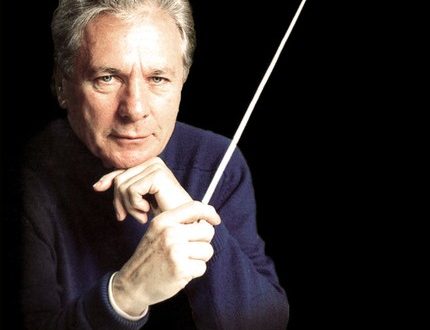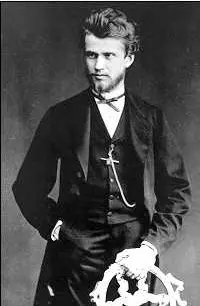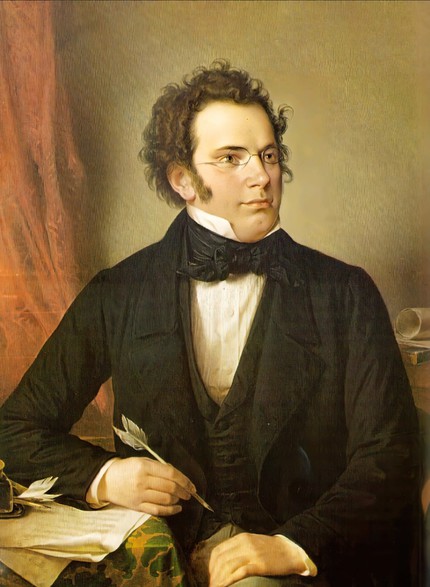
Franz Schubert |
Contents
Franz Schubert

Trusting, frank, incapable of betrayal, sociable, talkative in a joyful mood – who knew him differently? From the memories of friends
F. Schubert is the first great romantic composer. Poetic love and pure joy of life, despair and coldness of loneliness, longing for the ideal, thirst for wandering and hopelessness of wandering – all this found an echo in the composer’s work, in his naturally and naturally flowing melodies. The emotional openness of the romantic worldview, the immediacy of expression raised the genre of the song to an unprecedented height until then: this previously secondary genre in Schubert became the basis of the artistic world. In a song melody, the composer could express a whole range of feelings. His inexhaustible melodic gift allowed him to compose several songs a day (there are more than 600 in total). Song melodies also penetrate into instrumental music, for example, the song “Wanderer” served as material for the piano fantasy of the same name, and “Trout” – for the quintet, etc.
Schubert was born into the family of a school teacher. The boy showed outstanding musical abilities very early and he was sent to study in convict (1808-13). There he sang in the choir, studied music theory under the direction of A. Salieri, played in the student orchestra and conducted it.
In the Schubert family (as well as in the German burgher environment in general) they loved music, but allowed it only as a hobby; the profession of a musician was considered insufficiently honorable. The novice composer had to follow in the footsteps of his father. For several years (1814-18) school work distracted Schubert from creativity, and yet he composes an extremely large amount. If in instrumental music the dependence on the style of the Viennese classics (mainly W. A. Mozart) is still visible, then in the song genre, the composer already at the age of 17 creates works that fully revealed his individuality. The poetry of J. W. Goethe inspired Schubert to create such masterpieces as Gretchen at the Spinning Wheel, The Forest King, songs from Wilhelm Meister, etc. Schubert also wrote many songs to the words of another classic of German literature, F. Schiller.
Wanting to devote himself entirely to music, Schubert left work at the school (this led to a break in relations with his father) and moved to Vienna (1818). There remain such fickle sources of livelihood as private lessons and the publication of essays. Not being a virtuoso pianist, Schubert could not easily (like F. Chopin or F. Liszt) win a name for himself in the musical world and thus promote the popularity of his music. The nature of the composer did not contribute to this either, his complete immersion in composing music, modesty and, at the same time, the highest creative integrity, which did not allow any compromises. But he found understanding and support among friends. A circle of creative youth is grouped around Schubert, each of whose members must certainly have some kind of artistic talent (What can he do? – every newcomer was greeted with such a question). The participants of the Schubertiads became the first listeners, and often co-authors (I. Mayrhofer, I. Zenn, F. Grillparzer) of the brilliant songs of the head of their circle. Conversations and heated debates about art, philosophy, politics alternated with dances, for which Schubert wrote a lot of music, and often just improvised it. Minuets, ecossaises, polonaises, landlers, polkas, gallops – such is the circle of dance genres, but waltzes rise above everything – no longer just dances, but rather lyrical miniatures. Psychologizing the dance, turning it into a poetic picture of the mood, Schubert anticipates the waltzes of F. Chopin, M. Glinka, P. Tchaikovsky, S. Prokofiev. A member of the circle, the famous singer M. Vogl, promoted Schubert’s songs on the concert stage and, together with the author, toured the cities of Austria.
Schubert’s genius grew out of a long musical tradition in Vienna. The classical school (Haydn, Mozart, Beethoven), multinational folklore, in which the influences of the Hungarians, Slavs, Italians were superimposed on the Austro-German basis, and finally, the special predilection of the Viennese for dance, home music-making – all this determined the appearance of Schubert’s work.
The heyday of Schubert’s creativity – the 20s. At this time, the best instrumental works were created: the lyric-dramatic “Unfinished” symphony (1822) and the epic, life-affirming symphony in C major (the last, Ninth in a row). Both symphonies were unknown for a long time: the C major was discovered by R. Schumann in 1838, and the Unfinished was found only in 1865. Both symphonies influenced composers of the second half of the XNUMXth century, defining various paths of romantic symphonism. Schubert never heard any of his symphonies professionally performed.
There were many difficulties and failures with opera productions. Despite this, Schubert constantly wrote for the theater (about 20 works in total) – operas, singspiel, music for the play by V. Chesi “Rosamund”. He also creates spiritual works (including 2 masses). Remarkable in depth and impact, music was written by Schubert in chamber genres (22 piano sonatas, 22 quartets, about 40 other ensembles). His impromptu (8) and musical moments (6) marked the beginning of the romantic piano miniature. New things also appear in songwriting. 2 vocal cycles to verses by W. Muller – 2 stages of a person’s life path.
The first of them – “The Beautiful Miller’s Woman” (1823) – is a kind of “novel in songs”, covered by a single plot. A young man, full of strength and hope, goes towards happiness. Spring nature, a briskly babbling brook – everything creates a cheerful mood. Confidence is soon replaced by a romantic question, the languor of the unknown: Where to? But now the stream leads the young man to the mill. Love for the miller’s daughter, her happy moments are replaced by anxiety, the torments of jealousy and the bitterness of betrayal. In the gentle murmuring, lulling streams of the stream, the hero finds peace and solace.
The second cycle – “Winter Way” (1827) – is a series of mournful memories of a lonely wanderer about unrequited love, tragic thoughts, only occasionally interspersed with bright dreams. In the last song, “The Organ Grinder”, the image of a wandering musician is created, forever and monotonously spinning his hurdy-gurdy and nowhere to find either a response or an outcome. This is the personification of the path of Schubert himself, already seriously ill, exhausted by constant need, overwork and indifference to his work. The composer himself called the songs of “Winter Way” “terrible”.
The crown of vocal creativity – “Swan Song” – a collection of songs to the words of various poets, including G. Heine, who turned out to be close to the “late” Schubert, who felt the “split of the world” more sharply and more painfully. At the same time, Schubert never, even in the last years of his life, closed himself in mournful tragic moods (“pain sharpens thought and tempers feelings,” he wrote in his diary). The figurative and emotional range of Schubert’s lyrics is truly unlimited – it responds to everything that excites any person, while the sharpness of contrasts in it is constantly increasing (the tragic monologue “Double” and next to it – the famous “Serenade”). Schubert finds more and more creative impulses in the music of Beethoven, who, in turn, got acquainted with some of the works of his younger contemporary and highly appreciated them. But modesty and shyness did not allow Schubert to personally meet his idol (one day he turned back at the very door of Beethoven’s house).
The success of the first (and only) author’s concert, organized a few months before his death, finally attracted the attention of the musical community. His music, especially songs, begins to spread rapidly throughout Europe, finding the shortest path to the hearts of listeners. She has a huge influence on the Romantic composers of the next generations. Without the discoveries made by Schubert, it is impossible to imagine Schumann, Brahms, Tchaikovsky, Rachmaninov, Mahler. He filled the music with the warmth and immediacy of song lyrics, revealed the inexhaustible spiritual world of man.
K. Zenkin
- The life and work of Schubert →
- Songs of Schubert →
- Schubert’s piano works →
- Symphonic works of Schubert →
- Chamber-instrumental creativity of Schubert →
- Schubert’s choral work →
- Music for the stage →
- List of works by Schubert →
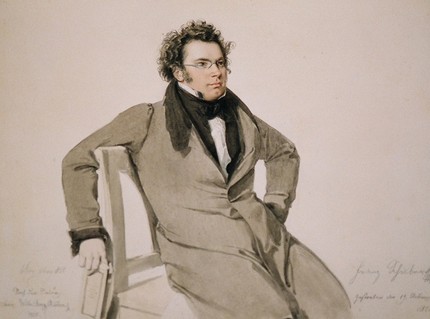
Schubert’s creative life is estimated at only seventeen years. Nevertheless, listing everything he wrote is even more difficult than listing the works of Mozart, whose creative path was longer. Just like Mozart, Schubert did not bypass any area of musical art. Some of his heritage (mainly operatic and spiritual works) was pushed aside by time itself. But in a song or a symphony, in a piano miniature or a chamber ensemble, the best aspects of Schubert’s genius, the wonderful immediacy and ardor of romantic imagination, the lyrical warmth and quest of a thinking person of the XNUMXth century found expression.
In these areas of musical creativity, Schubert’s innovation manifested itself with the greatest courage and scope. He is the founder of the lyrical instrumental miniature, the romantic symphony – lyrical-dramatic and epic. Schubert radically changes the figurative content in major forms of chamber music: in piano sonatas, string quartets. Finally, the true brainchild of Schubert is a song, the creation of which is simply inseparable from his very name.
Schubert’s music was formed on Viennese soil, fertilized by the genius of Haydn, Mozart, Gluck, Beethoven. But Vienna is not only the classics represented by its luminaries, but also the rich life of everyday music. The musical culture of the capital of a multinational empire has long been subjected to a tangible impact of its multi-tribal and multi-lingual population. Crossing and interpenetration of Austrian, Hungarian, German, Slavic folklore with centuries of non-decreasing influx of Italian melos led to the formation of a specifically Viennese musical flavor. Lyrical simplicity and lightness, intelligibility and grace, cheerful temperament and dynamics of lively street life, good-natured humor and ease of dance movement left a characteristic imprint on the everyday music of Vienna.
The democratism of Austrian folk music, the music of Vienna, fanned the work of Haydn and Mozart, Beethoven also experienced its influence, according to Schubert – a child of this culture. For his commitment to her, he even had to listen to reproaches from friends. Schubert’s melodies “sometimes sound too domestic, too more Austrian, – writes Bauernfeld, – resemble folk songs, the somewhat low tone and ugly rhythm of which do not have sufficient basis for penetrating into a poetic song. To this kind of criticism, Schubert replied: “What do you understand? This is how it should be!” Indeed, Schubert speaks the language of genre music, thinks in its images; from them grow works of high forms of art of the most diverse plan. In a broad generalization of song lyrical intonations that matured in the musical everyday life of the burghers, in the democratic environment of the city and its suburbs – the nationality of Schubert’s creativity. The lyrical-dramatic “Unfinished” symphony unfolds on a song and dance basis. The transformation of genre material can be felt both in the epic canvas of the “Great” symphony in C-dur and in an intimate lyrical miniature or instrumental ensemble.
The element of song permeated all spheres of his work. Song melody forms the thematic basis of Schubert’s instrumental compositions. For example, in the piano fantasy on the theme of the song “Wanderer”, in the piano quintet “Trout”, where the melody of the song of the same name serves as the theme for variations of the finale, in the d-moll quartet, where the song “Death and the Maiden” is introduced. But in other works that are not connected with the themes of specific songs – in sonatas, in symphonies – the song warehouse of thematism determines the features of the structure, the methods of developing the material.
It is natural, therefore, that although the beginning of Schubert’s composing path was marked by an extraordinary scope of creative ideas that prompted experiments in all areas of musical art, he found himself first of all in the song. It was in it, ahead of everything else, that the facets of his lyrical talent shone with a wonderful play.
“Among the music not for the theater, not for the church, not for the concert, there is a particularly remarkable department – romances and songs for one voice with piano. From a simple, couplet form of a song, this kind has developed to whole small single scenes-monologues, allowing all the passion and depth of spiritual drama. This kind of music was magnificently manifested in Germany, in the genius of Franz Schubert,” wrote A. N. Serov.
Schubert is “the nightingale and the swan of song” (B. V. Asafiev). The song contains all his creative essence. It is the Schubert song that is a kind of boundary that separates the music of romanticism from the music of classicism. The era of song, romance, which has begun since the beginning of the XNUMXth century, is a pan-European phenomenon, which “can be called by the name of the greatest master of the urban democratic song-romance Schubert – Schubertianism” (B. V. Asafiev). The place of the song in Schubert’s work is equivalent to the position of the fugue in Bach or the sonata in Beethoven. According to B. V. Asafiev, Schubert did in the field of song what Beethoven did in the field of symphony. Beethoven summarized the heroic ideas of his era; Schubert, on the other hand, was a singer of “simple natural thoughts and deep humanity.” Through the world of lyrical feelings reflected in the song, he expresses his attitude to life, people, the surrounding reality.
Lyricism is the very essence of Schubert’s creative nature. The range of lyrical themes in his work is exceptionally wide. The theme of love, with all the richness of its poetic nuances, sometimes joyful, sometimes sad, is intertwined with the theme of wandering, wandering, loneliness, permeating all romantic art, with the theme of nature. Nature in Schubert’s work is not just a background against which a certain narrative unfolds or some events take place: it “humanizes”, and the radiation of human emotions, depending on their nature, colors the images of nature, gives them this or that mood and corresponding coloring.
Schubert’s lyrics have undergone some evolution. Over the years, the naive youthful credulity, the idyllic perception of life and nature receded before the need of a mature artist to reflect the true contradictions of the surrounding world. Such an evolution led to the growth of psychological traits in Schubert’s music, to an increase in drama and tragic expressiveness.
Thus, contrasts of darkness and light arose, frequent transitions from despair to hope, from melancholy to simple-hearted fun, from intensely dramatic images to bright, contemplative ones. Almost simultaneously, Schubert worked on the lyrical-tragic “Unfinished” symphony and the joyfully youthful songs of “The Beautiful Miller’s Woman”. Even more striking is the proximity of the “terrible songs” of “The Winter Road” with the graceful ease of the last piano impromptu.
Nevertheless, the motives of grief and tragic despair, concentrated in the last songs (“Winter Way”, some songs to the words of Heine), cannot overshadow the enormous power of life-affirmation, that supreme harmony that Schubert’s music carries within itself.
V. Galatskaya
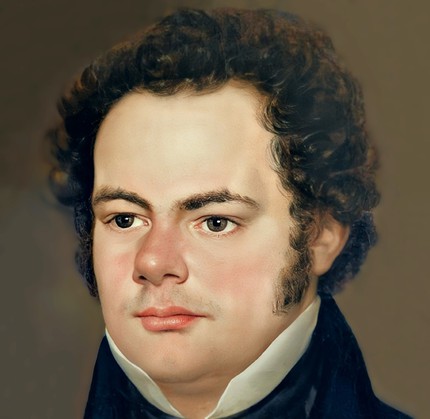
Schubert and Beethoven. Schubert – the first Viennese romantic
Schubert was a younger contemporary of Beethoven. For about fifteen years, both of them lived in Vienna, creating at the same time their most significant works. Schubert’s “Marguerite at the Spinning Wheel” and “The Tsar of the Forest” are “the same age” as Beethoven’s Seventh and Eighth Symphonies. Simultaneously with the Ninth Symphony and Beethoven’s Solemn Mass, Schubert composed the Unfinished Symphony and the song cycle The Beautiful Miller’s Girl.
But this comparison alone allows us to notice that we are talking about works of different musical styles. Unlike Beethoven, Schubert came to the fore as an artist not during the years of revolutionary uprisings, but at that critical time when the era of social and political reaction came to replace him. Schubert contrasted the grandiosity and power of Beethoven’s music, its revolutionary pathos and philosophical depth with lyrical miniatures, pictures of democratic life – homely, intimate, in many ways reminiscent of a recorded improvisation or a page of a poetic diary. Beethoven’s and Schubert’s works, coinciding in time, differ from each other in the same way that the advanced ideological trends of two different eras should have differed – the era of the French Revolution and the period of the Congress of Vienna. Beethoven completed the century-old development of musical classicism. Schubert was the first Viennese Romantic composer.
Schubert’s art is partly related to Weber’s. The romanticism of both artists has common origins. Weber’s “Magic Shooter” and Schubert’s songs were equally the product of the democratic upsurge that swept Germany and Austria during the national liberation wars. Schubert, like Weber, reflected the most characteristic forms of artistic thinking of his people. Moreover, he was the brightest representative of the Viennese folk-national culture of this period. His music is as much a child of democratic Vienna as the waltzes of Lanner and Strauss-father performed in cafes, as folk fairy-tale plays and comedies by Ferdinand Raimund, as folk festivals in the Prater park. Schubert’s art not only sang the poetry of folk life, it often originated directly there. And it was in folk genres that the genius of the Viennese romanticism manifested itself first of all.
At the same time, Schubert spent the entire time of his creative maturity in Metternich’s Vienna. And this circumstance to a large extent determined the nature of his art.
In Austria, the national-patriotic upsurge never had such an effective expression as in Germany or Italy, and the reaction that took hold throughout Europe after the Congress of Vienna assumed a particularly gloomy character there. The atmosphere of mental slavery and the “condensed haze of prejudice” were opposed by the best minds of our time. But under conditions of despotism, open social activity was unthinkable. The energy of the people was fettered and did not find worthy forms of expression.
Schubert could oppose cruel reality only with the richness of the inner world of the “little man”. In his work there is neither “The Magic Shooter”, nor “William Tell”, nor “Pebbles” – that is, works that went down in history as direct participants in the social and patriotic struggle. In the years when Ivan Susanin was born in Russia, a romantic note of loneliness sounded in Schubert’s work.
Nevertheless, Schubert acts as a continuer of Beethoven’s democratic traditions in a new historical setting. Having revealed in music the richness of heartfelt feelings in all the variety of poetic shades, Schubert responded to the ideological requests of the progressive people of his generation. As a lyricist, he achieved the ideological depth and artistic power worthy of Beethoven’s art. Schubert begins the lyric-romantic era in music.
The fate of the Schubert legacy
After Schubert’s death, intensive publication of his songs began. They penetrated all corners of the cultural world. It is characteristic that in Russia, too, Schubert’s songs were widely disseminated among the Russian democratic intelligentsia long before visiting guest performers, performing with virtuoso instrumental transcriptions, made them the fashion of the day. The names of the first connoisseurs of Schubert are the most brilliant in the culture of Russia in the 30s and 40s. Among them are A. I. Herzen, V. G. Belinsky, N. V. Stankevich, A. V. Koltsov, V. F. Odoevsky, M. Yu. Lermontov and others.
By a strange coincidence, most of Schubert’s instrumental works, created at the dawn of romanticism, sounded on a wide concert stage only from the second half of the XNUMXth century.
Ten years after the composer’s death, one of his instrumental works (the Ninth Symphony discovered by Schumann) brought him to the attention of the world community as a symphonist. In the early 50s, a C major quintet was printed, and later an octet. In December 1865, the “Unfinished Symphony” was discovered and performed. And two years later, in the basement warehouses of a Viennese publishing house, Schubert’s fans “dug up” almost all of his other forgotten manuscripts (including five symphonies, “Rosamund” and other operas, several masses, chamber works, many small piano pieces and romances). From that moment on, the Schubert heritage has become an integral part of world artistic culture.
V. Konen
- The life and work of Schubert →




